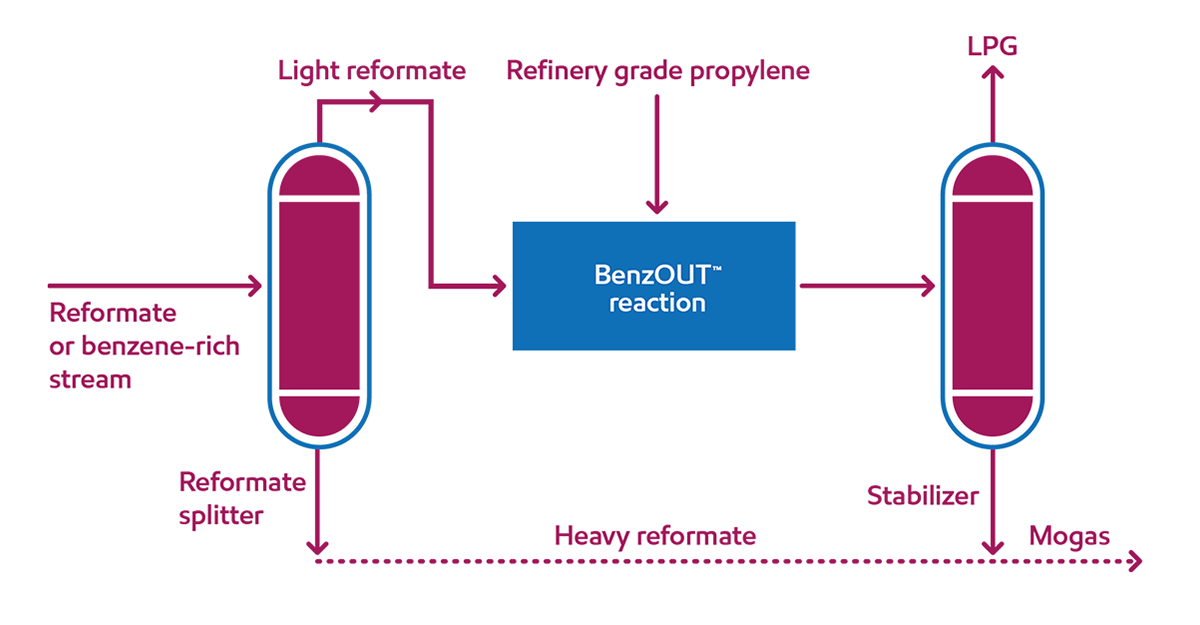The BenzOUT process is a commercially proven technology for benzene reduction in gasoline. BenzOUT converts benzene, typically in a light reformate stream, to higher alkylaromatic blending components by reacting a benzene rich stream with light olefins, such as a refinery grade propylene stream.
BenzOUT technology avoids octane loss with no hydrogen consumption associated with benzene saturation alternatives by alkylating propylene to the aromatic rich stream. BenzOUT can be a grassroots unit or retrofitted into an existing facility, such as a polygas unit. The technology was developed by ExxonMobil and is available for licensing through TechnipFMC Badger Process Technology to provide a unique process advantage to help refiners meet benzene regulations, while at the same time achieving an attractive economic return on their investment.
BenzOUT technology process configuration
- Fixed bed catalyst technology. The process uses a fixed bed liquid-phase reactor resulting in low utility requirements.
- Catalyst. The process utilizes an ExxonMobil proprietary zeolite catalyst.
- Stabilization. Propane fed to the unit with propylene is removed from the BenzOUT product in a product stabilizer. This can produce a propane product of HD-5 quality. The product from the BenzOUT technology is a light reformate with a reduced RVP.
BenzOUT services include:
- Initial consultations
- Development of licensing proposal
- Basic engineering package, including basic design specification and operating guide
- Engineering support during FEED and EPC stages
- Technology transfer, training, catalyst loading and startup support
BenzOUT technology advantages and economical benefits
- Conversion of 95%+ of the benzene in a reformate stream: highly selective and stable catalyst enabling the process to run at a very high benzene conversion to meet EPA Mobile Source Air Toxics (MSAT) regulations
- Low temperature liquid phase process
- Octane increase: 2-3 numbers of (research octane number + motor octane number)/2 gain in a full reformate, depending on the feed composition
- No hydrogen consumption: refineries could feed all the C8 components (low blending octane values) to the reformer unit to achieve increased hydrogen production and octane gain
- Gasoline volume swell: upgrading of light olefins and benzene into high-octane alkylaromatic blendstock would also result in a volume swell of the gasoline pool
BenzOUT™ process





